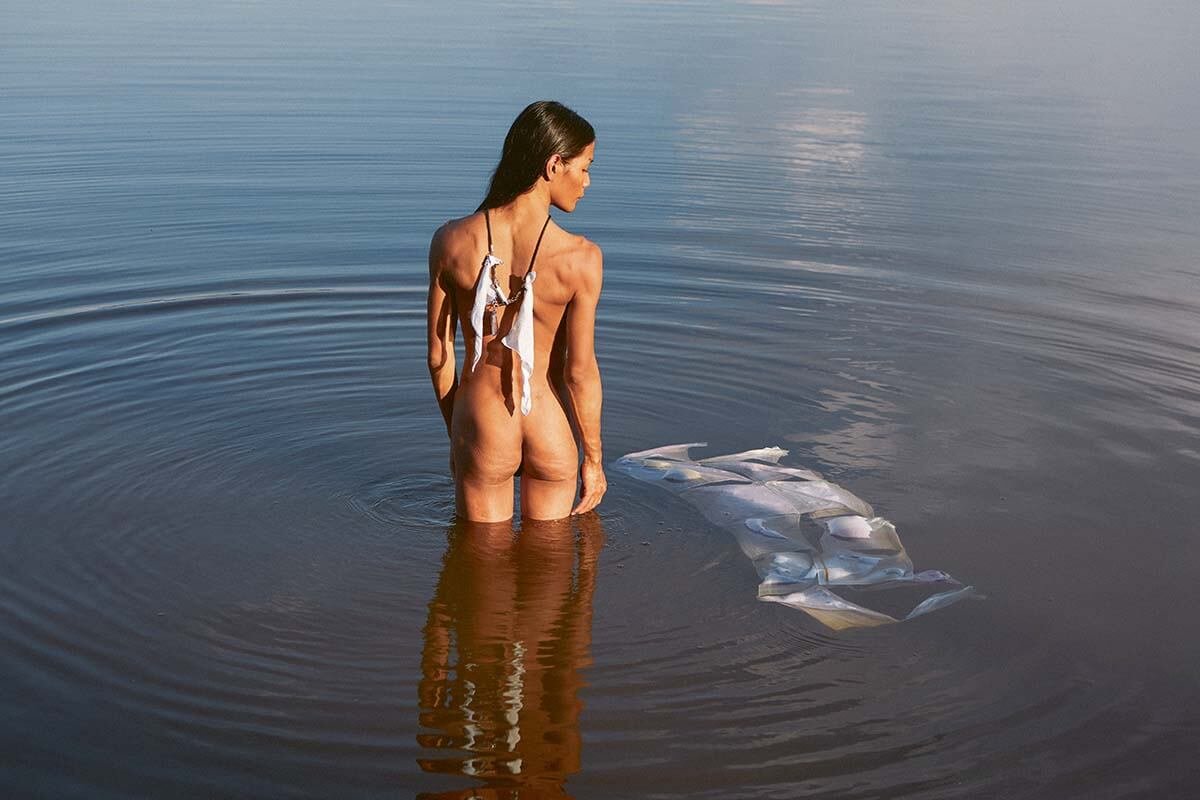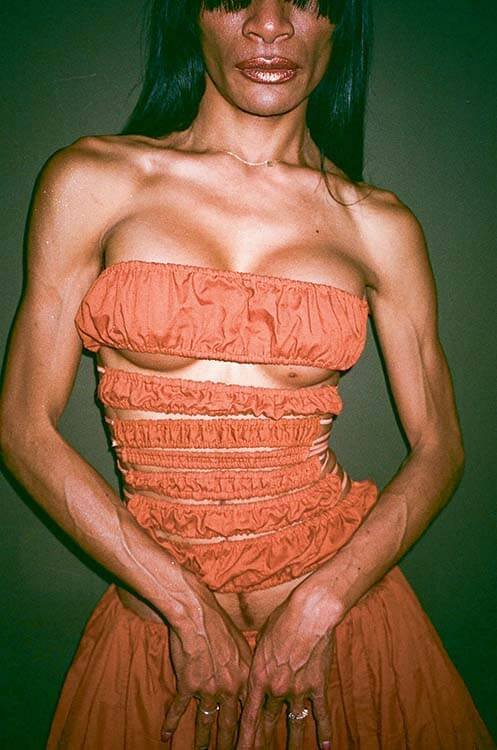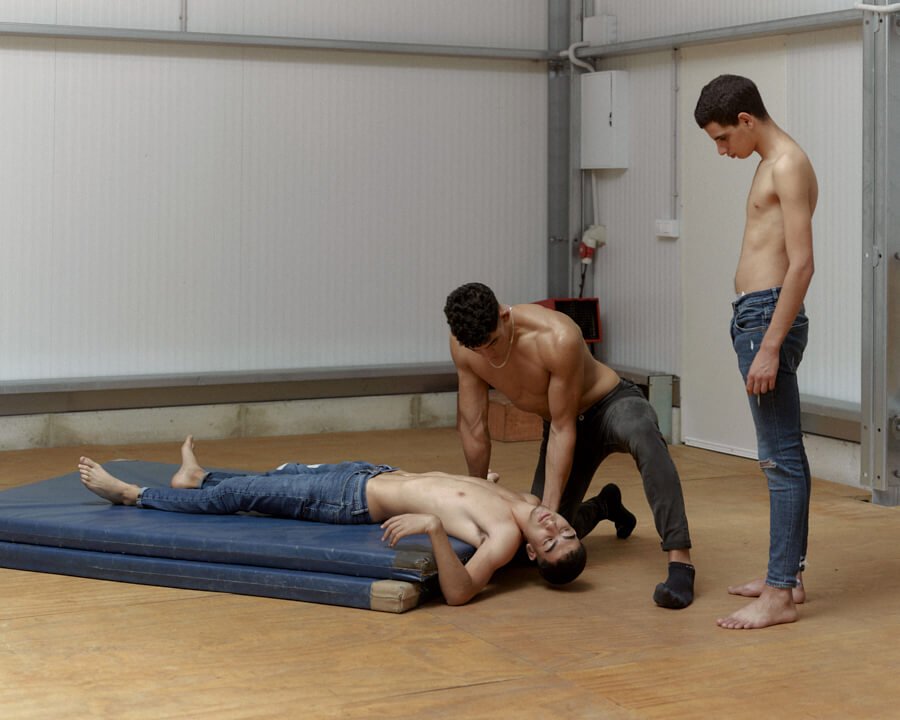.aesthetic talk
Fernando Lindez
Coming of Age
written Chidozie Obasi
Fernando Lindez is a bona fide heartthrob: He’s the kind of person who doesn’t wake up in a bad mood, and when he picks up the Zoom call to speak to me, he’s already in good spirits, laughing charismatically between sips of water.
Throughout our conversation, Lindez strikes as someone who is both insightful and honest, whether we’re discussing his wildest dreams - having been an aficionado of the movie industry for years, he believes in the power of community culture as a weapon of growth - or the challenges of being in the public eye from a young age. “I honestly never liked being in front of a camera and actually hated it!” He exclaims, cheerfully, radiating emotion as you’d expect from a man whose career basks in the limelight from iconic appearances in the world’s leading runways to iconic series such as Elite. He isn’t all sunshine and light though: Lindez revealed some of his most challenging experiences, but it was his own insecurities that helped him find common ground in life and in the characters he played. Wielding a coming of age cast, including the likes of Mirela Balic, Ivan Mendes and Nadia Al Saidi, his role in Elite has been making serious waves. From his initial career dabs, and living up to popular expectations, to mental health – we dug deep.
FERNANDO LINDEZ wearing
total look VERSACE
LE MILE Magazine
TRANCE Issue, No. 36 Cover Fernando Lindez
wearing MOSCHINO
“I honestly never liked being in front of a camera and actually hated it! But now that I've seen all the videos or the episodes, it's funny to remember everything that I did in that project.”
Fernando Lindez speaks with Chidozie Obasi
LE MILE Magazine TRANCE, Nr. 36
Chidozie Obasi
With everything that has happened over the years, have these times of uncertainty affected your identity in a way?
Fernando Lindez
I think this period was a great one for me, particularly because I had the chance to be involved in projects where I learned a lot from my partners, from the directors I met and the people I had the chance to work with. I think it affected me in a positive way and made me grow as a professional, particularly as an actor. Obviously the pandemic crisis badly affected the film industry and the fashion sector too, but I feel like it's slowly getting better.
How did you get into fashion?
It was all pure casualty! I honestly never liked being in front of a camera and I actually hated it. But it all started around 2016 or 2017, with no social media. I remember a friend of mine posted a photo with me on Instagram and an agent from Uno Models here in Spain saw that picture, and then he reached out to my friend.
What was your wildest dream as a kid?
When you're a kid, it's difficult to have only one: I wanted to be a lot of things. I wanted to travel all over the world to record and talk about nature. And of course, the thing about acting was surely more in my mind than modeling when I was younger. I really liked movies, and became passionate about the film industry from early on. So I always thought about becoming a great actor.
Would you say that your Spanish upbringing has influenced you in your career in a way?
No, I don't think so. I move by my personality, what I learn from the people I’ve met, from the things I experience in life and work.
Obviously, I know where I come from and I really appreciate my culture: It’s one of the best in the world for me. But I'm always open to listening to other cultures, to learn from other people and I don't think I'm attached to just being Spanish I always like to grasp aspects from other realities: I think it's good to open your mind in that way.
total look VALENTINO
top CELINE
team credits
seen PAOLO BARRETTA
fashion director CHIDOZIE OBASI
style editor DENNIS CAPPABIANCA
grooming ANNA PELLEGRINI
light assistant LORENZO OGLIALORO
“I think that when you are in a bad position and when you are feeling bad, you just have to say it. And you have to know when to stop.”
Fernando Lindez speaks with Chidozie Obasi
LE MILE Magazine TRANCE, Nr. 36
blazer + tie MOSCHINO
trousers VALENTINO
Starting from fashion, you've also transitioned into the film industry with various roles. So how did it all begin?
So it all started at the same time, both modeling and acting. I remember when I started in fashion, they also called me for an audition for a TV Show. I didn't even have a lot of experience into the acting industry. But now that I've seen all the videos or the episodes, it's funny to remember everything that I did in that project, which was my first one. And I only have happy memories about it. After that, I discovered I could act and I was able to do it. I wanted to learn more, so I got into acting in schools to learn more about this practice, and I'm still doing it. I think it's a profession where one is always learning.
And then what would you say that was your hardest role to ever take as an actor?
I think on Escándalo, which is a Spanish TV show. For me, it was very hard because it was my first big project as a main character. It was also a character who experienced a lot of difficulties during the story and with a really big internal problem. He had a lot of traumas from the past, so for me it was difficult to find the way this character was living with how he reacted to all the people he was having relations with during the show. It was my first time doing sex scenes too, a very hard pick for me. But, you know, it was great because I had the chance to work with Alexandra Jimenez, who is a really good actress here in Spain: she was very professional, a really good partner.
And then in terms of the outside pool of people, have you ever felt pressured to be anyone else that maybe you were not feeling quite close to in the film industry or in any roles that you took on as an actor?
Not yet, but I think as an actor, if I take a role or a character it's because I really want to do it and because I feel like I can be that person.
For example, in Elite, at the beginning, I was a bit afraid because I was playing a homosexual character. I’m not, so I wanted to hide that. However, I didn't want people to see a heterosexual guy playing as a gay actor, but I had Omar, which is a very close friend of mine, who was always supporting me and telling me how to move, how to speak, how to react to things in a way that I don't usually do. And that also helped me a lot. But it was something that was extremely interesting to me. Of course, I put some things from my own, from Fernando to Joel (the character in Elite), but it's a mix of everything that pushed me further to grow.
Would you ever consider going into production or directing?
I mean, right now, I would say no. Because I'm focusing on my acting career and I feel like I have so many things to learn, so many things to improve. I like the job as a director more than a producer. But I will see in the future. For the moment, what I want to put my focus on is acting.
How do you feel projects like Elite have developed you as an actor or just as a creative in general?
It's been almost one year and a half of filming: we filmed two seasons, and especially in the last one, my character had a lot of weight. For me, it was more difficult than the one we filmed before. And now that it’s been produced, I can say it was a big challenge for me because I did things that I never did before. I learned a lot from that and from my partners. It was a really, really good experience for me, which I’m grateful for.
What would you say is the biggest thing that you've learned from this experience?
Compañerismo! Being together. We were a big group of actors and actresses. So yeah, I would say working on a team. The power of collaboration and of being together, and also crafting a good relationship with your partner for me, it was the most important thing because we were always helping each other. And as an actor, I think it's very important to be always open to help others. Because if you help others, they will help you.
total look HERMES
And what were the most difficult and challenging ones that you navigated when you were both in fashion and also now as an actor?
I had those complex moments. Especially, I remember, after the pandemic: a period where I really struggled with nutrition. I wasn’t in a good position, mentally. So I had to take a break to focus on myself, on my body, and on my mental health. I think that when you are in a bad position and when you are feeling bad, you just have to say it. And you have to know when to stop. You have to know your limits, and it's important to know yourself and to know where those limits are. Nowadays, I like to take care of my mental health: I go to therapy here in Madrid, teamed with sports. Together, these habits help to maintain a good mental and emotional balance.
Would you ever consider going into production or directing?
I mean, right now, I would say no. Because I'm focusing on my acting career and I feel like I have so many things to learn, so many things to improve. I like the job as a director more than a producer. But I will see in the future. For the moment, what I want to put my focus on is acting.
And in terms of social media and your image, you've become a mega star since Elite. How do you cope with the public, and how does bad and good criticism affect your mental health?
I always try to put limits on my social media, as I only have Instagram.
But, I'm also someone who doesn't like to show a lot of my intimate persona on those platforms. I feel a bit afraid, I have to be honest, of showing my life and talking to people on there. Because of the the public opinion which can demonise or categorize you in a bad way.
What is next for you?
I want to move to New York for a couple of months, I will see! don't know when I will move to that place, and I don't know when I want to leave. But yeah, I want to go there and, you know, continue modeling there in the States as well and grow as an actor and as a person.
follow artist @fernando_lindez
via Why Not Models




















































